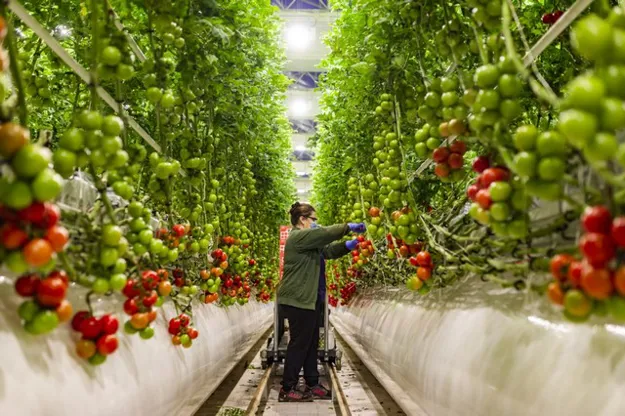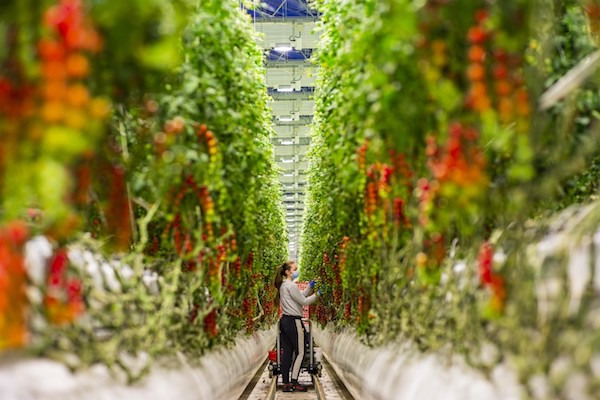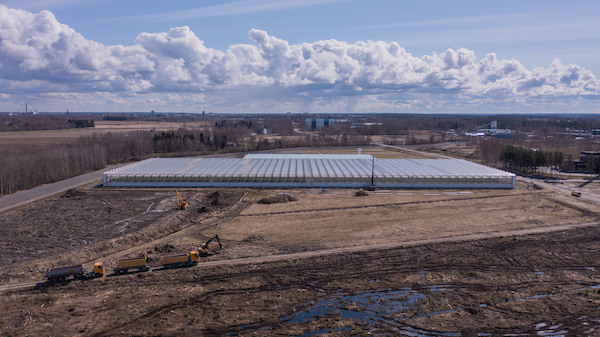On the west coast of Finland, a five-year-old semi-closed greenhouse is stocking supermarket shelves with nearly carbon-neutral, high-quality TOV and cherry tomatoes. Agrifutura Tomaatit acquired a study of its climate footprint from LUKE (Natural Resources Institute Finland) in 2021 and despite growing in the harsh and cold Finish climate, their climate footprint is ca. 0.36 kgCO2-ekv/kg, a result superior to that of many European countries and Finish colleagues. With their new greenhouse, they are looking to further lower their footprint. "It is our goal to lower it to 0 in the coming years through compensation models – such as reforestation projects – while we are working to pioneer new ways of growing crops with our own methods to further reduce our CO2-footprint as well as operating costs. In future, we hope to replicate this concept around the world to bring CO2-neutral crops to a larger group of consumers."

Cold and dark winter
LUKE calculated the carbon footprint of various greenhouses in northern Europe by considering heating requirements, the use of energy-saving technologies, waste management, and energy sources, among others. The average carbon footprint for Finnish greenhouses was estimated to 3 kg CO2-ekv/kg. “In Spain, the carbon footprint can be as low as 0.5-1.4 kg CO2-ekv/kg while in the Netherlands, we’ve seen 1.5-2.5 kg CO2-ekv/kg. For the Finish market, transport plays a role in these scores, making local growing more interesting. Finland is relatively cold and dark during the winter, so we were quite proud to get this score from LUKE,” says chief marketing officer Teemu Kanasuo with Agrifutura Tomaatit.
He explains how the company aims to produce high-quality tomatoes while remaining carbon neutral and using sustainable production techniques. So how do they do it? Well, with a very high-tech greenhouse to start with. The Agrifutura Tomaatit greenhouse is located in Pori, Finland, roughly 10 km from the Gulf of Bothnia and 240 km northwest of Helsinki, Finland. Established in 2016, the company currently grows tomatoes in a KUBO “Ultra Clima” semi-closed greenhouse spanning an area of 2 ha. According to chief marketing officer Teemu Kanasuo, the “Ultra Clima” greenhouse is the first of its kind in Finland and was designed specifically with energy efficiency and higher productivity in mind through optimizing the climate. The facility is equipped with double curtains to keep the lights and heating inside, collects rain and since it snows regularly in Finland, meltwater, processes organic waste, and uses eco-friendly packaging materials. The greenhouse is heated with the local city’s district heating, which is produced with woodchips.

Then there’s the electricity. Other than you might expect, the heating installation is not ravishing new and high-tech. "Newly constructed wind and water power has a bad CO2 footprint given the amortization of the construction costs. We specifically use old water power because the CO2 from the construction has already been amortized."
Teemu also explained that it would be possible for the company to further reduce its footprint by simply growing more kilos of tomatoes since the carbon footprint combines resources to use with crop yield. Yet, the company prides itself on providing consumers with great-tasting tomatoes harvested at peak ripeness. To do so, the greenhouse selects its varieties based on taste rather than simply yield. “With Roterno we don’t have the highest yielding crop, but we rather focus on taste and color. Growing a high-yielding variety would allow us to drop our carbon footprint even further, but we don’t want to sacrifice taste and color,” explains Teemu.

Expansion of 2.5 ha underway
Agrifutura Tomaatit also recently began construction on a 2.5-ha greenhouse site. This new semi-closed greenhouse will be built by Certhon. While Agrifutura Tomaatit typically plants its crop during the summer months, the new greenhouse will only be completed in early autumn. The first crop will be planted in November 2021 and the harvest is expected to begin in February 2022. This is not in accordance with the traditional Finish season, but might help them keep their customers year-round.
“While we might need to learn to grow with the new greenhouse, we aim to further reduce our footprint with it. It will be equipped with a hybrid lighting system, allowing us to balance the energy efficiency of LED lights with the radiant heat produced by HPS lights. During spring and autumn, we won’t need that much additional heat in the greenhouse so we will use only the LED lights. Once we begin lighting the crop all day and the outdoor temperatures drop, HPS lights will allow you to add more radiant heat to the greenhouse,” says Teemu. “The use of LED lights might be one of the ways that we will make us even more efficient.”
For more information
Agrifutura
CMO Teemu Kanasuo
+358 500 634189
teemu.kanasuo@agrifutura.fi
CEO Sami Vekkeli
+358 44 772 7160
sami.vekkeli@agrifutura.fi
